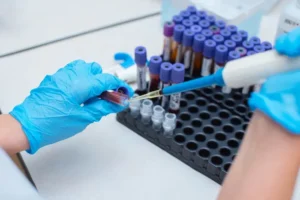From the Editor – FDA’s Final Rule on LDTs Raises Concerns for Personalized Medicine

Arecent report from data and analytics firm GlobalData finds that FDA’s final rule on laboratory developed tests’ (LDT) hampers innovation and puts the future of these devices in limbo. With the FDA’s final rule on LDTs on the horizon, clinical laboratories, manufacturers, and patients have raised concerns about its potential impact on the U.S. diagnostic industry. Scheduled for implementation on May 6, 2025, the rule introduces new requirements for small laboratories, requiring them to comply with FDA standards for a broad range of test types, including those involving complex or rare biological samples. “The future of LDTs transitioning to medical devices is in limbo. This is due to the multi-year process, which can lead to multiple opportunities for litigation that may delay timelines set out by the FDA,” says Selena Yu, senior medical analyst at GlobalData.
The court case — American Clinical Laboratory Association (ACLA) v. U.S. Food and Drug Administration (FDA) — arguing that FDA is overstepping its regulatory authority by grouping LDTs as medical devices still in session adds another layer of complexity. If the lawsuit is successful, FDA will need to amend the rule or scrap it altogether.
Yu says that the diagnostic space should remain flexible and position itself for success before the first stage deadline. “Laboratories need to update their quality management systems to include adverse event reporting, corrections, and removals, and establish a complaint file. However, there is some hesitancy to invest in [such changes] if the lawsuit succeeds,” she says.
Many clinical laboratories lack expertise in FDA proceedings, and they are likely to rely on their manufacturing vendors for aid. IVD manufacturers need to consolidate LDTs, where their reagents are involved, by selecting which tests are investment-worthy, because proceeding with clinical trials and FDA approval can be costly. They will need to consider aspects such as LDT profitability (market size and patient pool growth, test manufacturing cost, and production) and clinical trial complexity (limited patient pool, expensive, and exhaustive to execute) when selecting which LDTs to continue manufacturing.
“The FDA’s projected multi-year timeline for oversight in LDTs could be delayed as there is ample opportunity for more litigations to arise,” says Yu. “It is difficult to predict what will happen in the next few months for LDTs as new leaders enter the White House, FDA, and HHS, which, coupled with the current lawsuit against the FDA, makes the future of LDTs transitioning to medical devices uncertain.”
Article source:MEDICAL DESIGN BRIEFS









